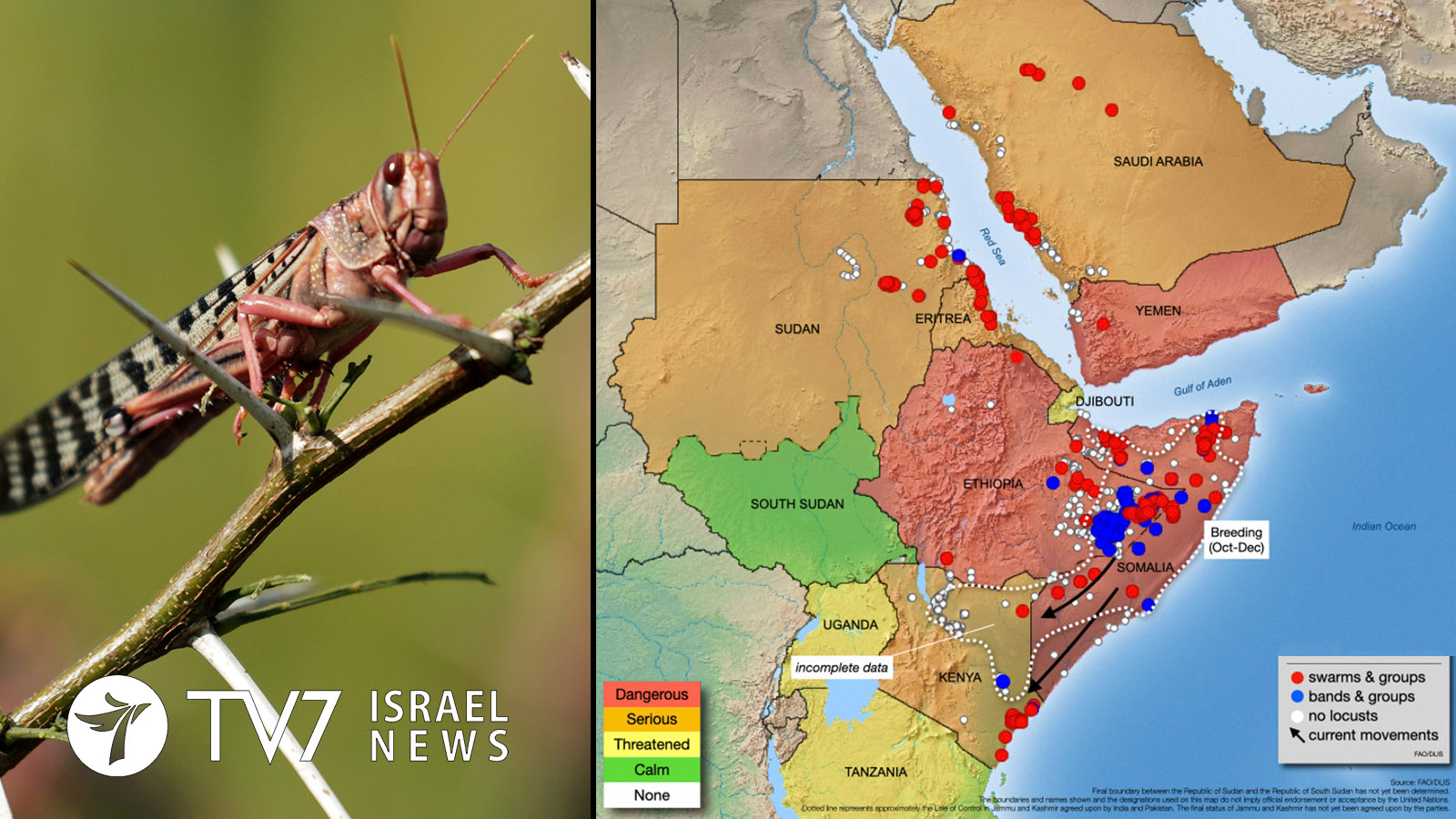Substantial and widespread breeding continues in eastern Ethiopia and central Somalia, according to the latest update by the Desert Locust Information Service (DLIS) of the United Nations Food and Agriculture Organization (FAO). Despite ongoing intensive ground and aerial control operations in both countries, it is feared that immature swarms forming there will migrate south into northeast Kenya. This movement is expected to rise even further throughout the end of this month and continue into January.
As expected, over the past week there have been rising numbers of immature locusts forming new swarms in Ethiopia and Somalia amid ongoing fledging (gaining the ability to become airborne) by more late instar hopper bands.
The majority of the hopper bands in central Somalia have now fledged and already formed swarms, while numerous hopper bands of all stages have been reported in a large 225 km by 375 km sector of the eastern Somali region in Ethiopia, between the Shabelle River and the border of northern Somalia.
Elsewhere in Ethiopia, a mature swarm was identified in the southern Rift Valley between Teltele and the Kenya border believed to have come from the north, while an immature swarm arrived in northern Afar coming from adjacent areas in Eritrea.
Several swarms in Somalia, meanwhile, have moved to coastal and subcoastal areas in the northwest and northeast, where they are expected to soon lay eggs that will lead to an increase in fresh hopper bands. Breeding is already underway on the northern plateau in areas with recent rainfall from Cyclone Gati/
On the Red Sea, control operations are in progress against breeding that has begun and expected to increase along adjacent coasts. Several swarms and adult groups were detected on Sudan’s shoreline and subcoastal areas of the northeast, as well as on the Eritrea coast. In Saudi Arabia, adult groups and swarms are maturing and laying eggs on the central and northern coast, as immature swarms appeared in the Kingdom’s interior regions. In Yemen, surveys are underway within a limited area on the northern Red Sea coast, and a swarm was reported to be present near Sana’a.
The United Nations Food and Agriculture Organization has advised that Ethiopia and Somalia maintain intensive survey and control operations, while Kenya should exercise “extreme vigilance and preparedness” and close monitoring be continued along both sides of the Red Sea to combat the relentless plague of locusts.
City-sized clouds of locusts can fly up to 150 km (90 miles) a day with the wind, and adults can consume roughly their own weight in fresh food per day.
In fact, experts say that a single square kilometer swarm (estimated to consist of some 40 -80 million insects) can eat as much food as 35,000 people – in just one day.
In a region where 19 million people already go hungry, the FAO has warned that this year’s locust invasion has been a disaster presented greater danger than droughts or floods.
Kenya, the region’s wealthiest and most stable country, experienced its worst infestation in 70 years in 2020.
